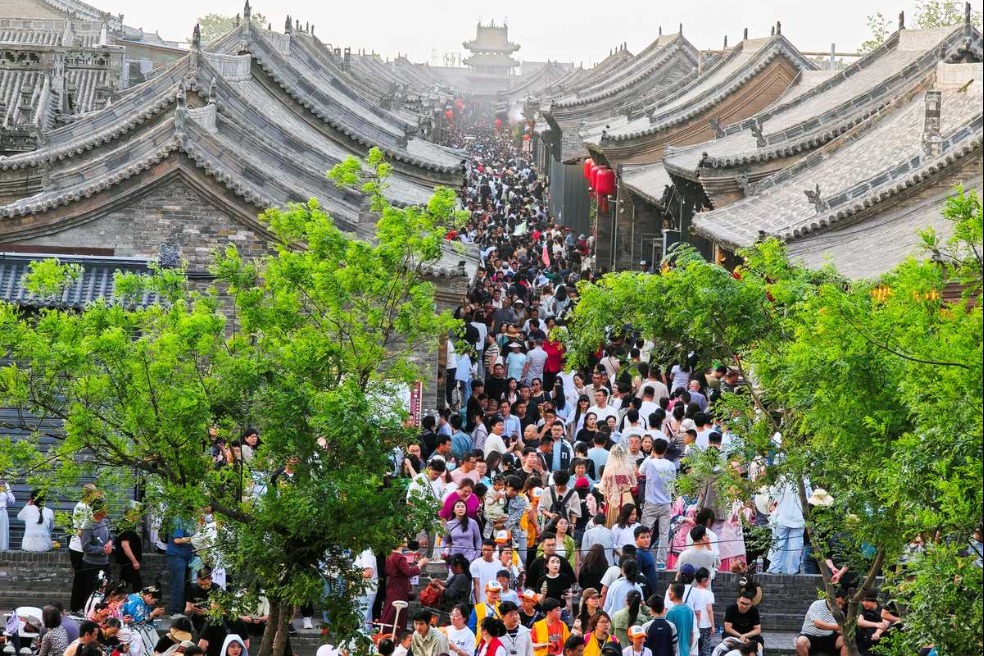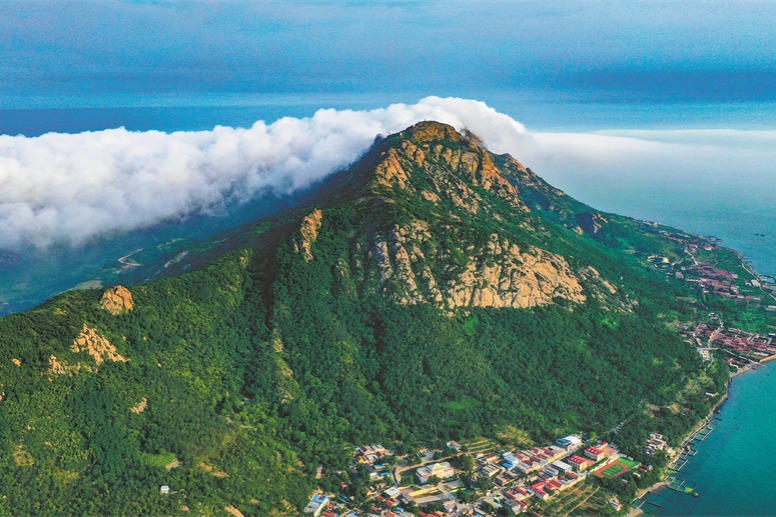Strict regulations create conditions for finless porpoises to find way back home


In early April, Shen Fan, a photographer from Anqing, Anhui province, was pleased to spot several pods of finless porpoises piloting their way along a stretch of the Yangtze River.
The mammals — dubbed "water pandas" because they are critically endangered and actually rarer than giant pandas — have been placed under protection by various government initiatives.
The country's first regional regulation on protecting the Yangtze finless porpoise was passed by the Anqing people's congress and came into force on Jan 1, 2021.
On the same day, a strict 10-year fishing ban in the Yangtze River Basin was put in place to protect and restore the ecological environment of the river.
"The two measures have effectively protected the finless porpoise, as we can see the water is getting cleaner, and fish (the mammal's food source) are increasing," said Shen, who has been observing the species for years.
Ma Jianhua, a local expert on finless porpoise protection, said there are now 180 to 200 porpoises in the river's Anqing section, plus about 60 more in the lower section of neighboring Tongling city.
Tongling's fishing authorities have released some 41 million fish into the Yangtze River Basin since 2019, and will release another 4 million this year starting in June.
The province will further expand the ecological restoration measures from the Yangzte River's mainstream to its tributaries and inland lakes, according to a recent report by China Central Television.
The measures, including recovering aquatic vegetation and releasing filter-feeding fish, will be expanded to all 84 local lakes that feed the river, according to the report.
Experts and officials said the measures will benefit the environment on a much larger scale than just protecting a certain species, and the provincial capital of Hefei provides a good example.
The city, with nearly 10 million residents, administers Chaohu Lake, the country's fifth-largest freshwater lake.
With accelerating industrialization and urbanization, the watershed of Chaohu had once been subject to a rising population and worsening water pollution.
In 1996, the central authorities listed the lake and its feeder rivers as key targets for pollution control.
The city took a number of measures to protect the environment around the lake, including banning fishing and turning agricultural fields into wetlands, according to Luo Yunfeng, mayor of Hefei.
He said the city government has invested billions since 2018, after it released a plan to create an international wetland city accreditation. A major project to restore 10 wetland sites around Chaohu Lake was also announced.
To make the goals irrevocable, the standing committee of the Hefei people's congress, the local legislative body, made a regulation exclusively for the wetlands in 2019, Luo said.
The regulation drew the initial boundaries of the wetland sites and ruled that their sizes and ecological functions could not be degraded. Thousands of rural households were relocated from the sites.
The lake releases some 4 billion cubic meters of water into the Yangtze River annually, and the water quality has remained at Grade II(fairly good) in recent years, according to the provincial administration bureau of Chaohu Lake.
Luo Falong, a local official in charge of the wetland administration, said the restoration measures have played a vital role in improving the water quality of Chaohu Lake.
Hefei was accredited as an international wetland city during the 14th Meeting of the Conference of the Contracting Parties (COP14) to the Ramsar Convention on Wetlands held in November 2022 in Wuhan, Hubei province.
- From muggles to birders, quiet hobby finds its wings
- Two-way tourism between China, Europe gathers pace over May holiday
- Nanjing Massacre survivor Liu Guixiang dies
- Macao's resident deposits rise in March
- Taiwan youth seek their career in Chinese mainland
- Xi urges youth to contribute to Chinese modernization





































